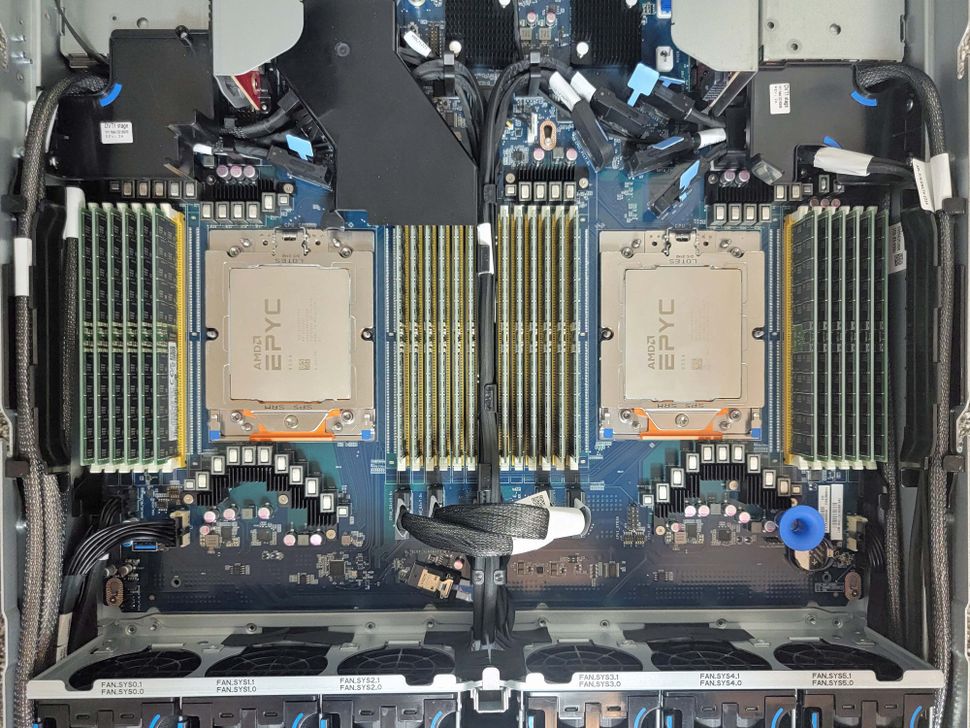
Ryzen AI 7 Pro 160 bests previous-gen Ryzen 9 — chip hits Geekbench with three Zen 5 and five Zen 5c cores
July 5, 2024
Intel 18A Panther Lake and Clearwater Forest CPUs are booting — steady progress toward the next-gen lithography node
August 6, 2024Leading-edge servers need leaning-edge DIMMs
Computex 2024 was a massive expo, and as such, it had some hidden delights that we didn't manage to spot for ourselves. For example, the Gigabyte R283-ZK0: This server motherboard has done the seemingly impossible and fits 48 DDR5 memory slots inside a standard 2U server form factor.
First spotted by ServeTheHome, the Gigabyte board does indeed fit 48 memory slots on a single motherboard dominated by a pair of AMD's SP5 sockets for EPYC processors. To accommodate such an insane amount of RAM, the CPUs and DIMMs cannot sit next to each other; instead, they arrange the RAM in descending sets of 6-2-4-4-2-2-4. This staircase design allows NVMe SSDs and extra cooling fans to hide in the created nooks.
AMD had to use skinnier DDR5 slots to cram 12 memory channels into our test system. As a result, AMD had to warn us not to put any lateral pressure on the DIMMs when installing them or the heatsink, as AMD had experienced shearing off DIMMs from slight pressure due to the skinnier slots. That highlights the big challenges that Gigabyte's interesting new solution has solved.
The Innovative Gigabyte R283-ZK0 will ship ready for two AMD EPYC 9004 series processors, which ship at up to 128 cores/256 threads and run at up to 300W TDP. Eight front NVMe bays rest in the front, and 4 hot-swappable 2.5" SSD bays take up the rear. Two M.2 slots are inside with four FHHL (full-height half-length) PCIe Gen5 x16 slots. Two gigabit LAN ports and two OCP 3.0 slots cover network connectivity, and two 2700W 80 Plus Titanium power supplies keep the lights on.
The massive SP5 CPU sockets eat up board real estate like Blackrock, which creates a challenge for motherboard and system vendors looking to supply consumers needing high amounts of RAM in a small footprint. If all you need is dual-socket, 2DPC (2 DIMMs per channel) servers, Gigabyte has a solution in the G493-ZB0. However, this 4U server is for GPUs and takes up a hefty 4 rack spaces.
Gigabyte has shaved off half of the thickness of the G493-ZB0 and doubled the memory capacity of EPYC systems, creating the first 2U dual-socket 2DPC server. Though the end result may look silly, it is an impressive feat that will surely excite the few users who need such extreme memory capacity at a space deficit.




